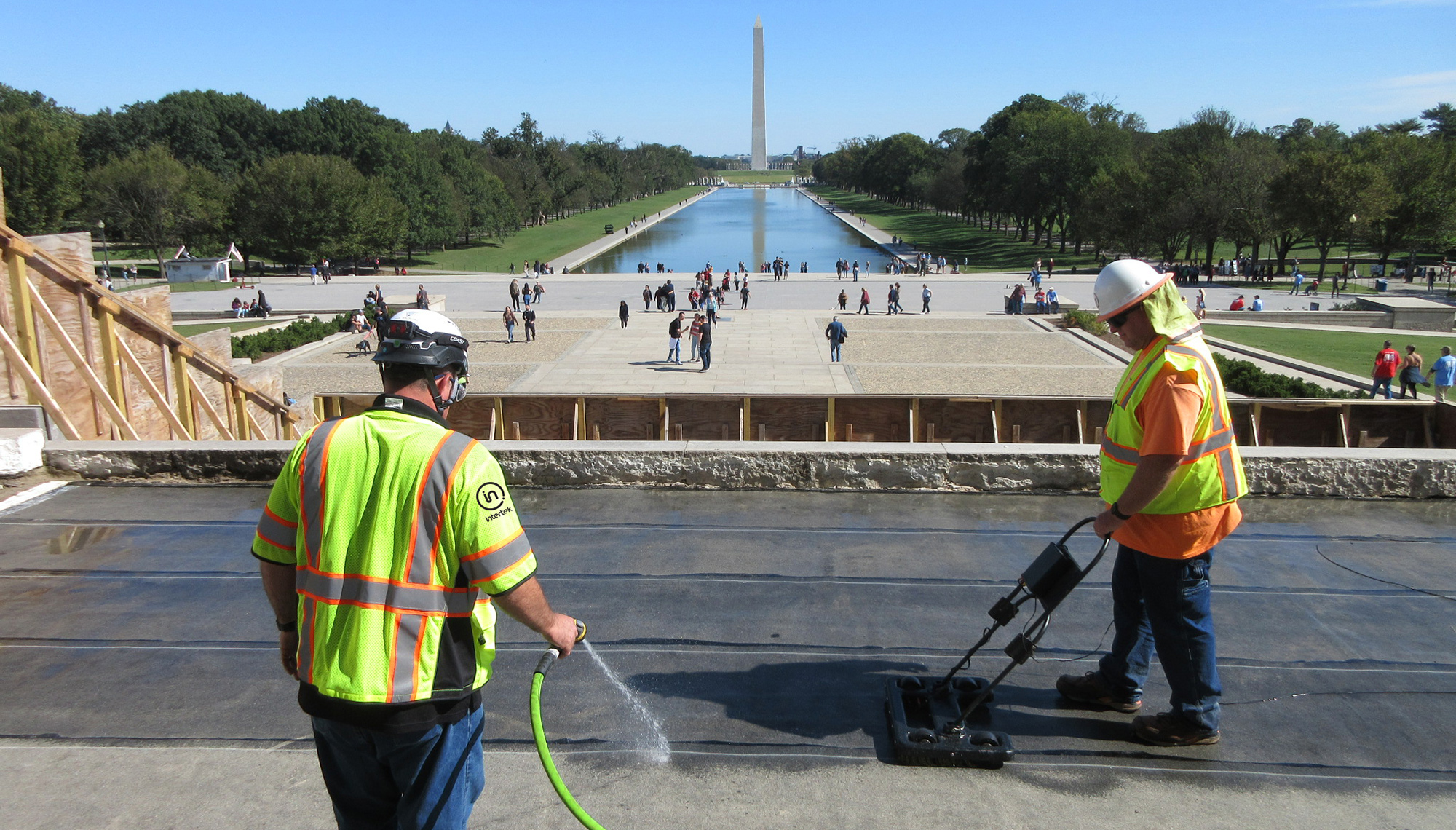Protecting Your Investment: How ELD Technology Helps Safeguard Buildings from Costly Leaks

20 Dec 2023
How ASTM Standards can help Enhance the Reliability and Efficiency of Building Waterproofing
Leaks can cause significant damage to buildings and infrastructure, leading to costly repairs, downtime, and even health hazards. Early detection and repair of leaks is essential to minimize the damage and costs.
Traditional leak detection methods, such as flood testing and infrared surveys, can be time-consuming, expensive, and disruptive. Electronic leak detection (ELD) is a newer technology that offers a number of advantages over traditional methods.
ELD is a non-destructive testing method that uses an electrical current to detect leaks in waterproofing and roofing membranes. There are a variety of methods and equipment that can be used in both high and low voltage applications. ELD is fast, accurate, and can be used on a variety of surfaces, including wet and dry surfaces.
For roof integrity testing, and to comply with the test standard, the conductive substrate must be present directly below the roofing/waterproofing membrane. The conductive material can be a structural concrete deck for the waterproofing systems (plazas, below-grade waterproofing, etc.) or conductive primer/ wire mesh installed over the top layer of insulation/ cover board directly below the roofing membrane for the conventional roof systems.
ELD is also a valuable tool for field testing and diagnostic analysis of existing buildings. ELD can be used to detect leaks in roofs, plazas, parking decks, and other waterproofing applications. The location of conductive substrates when characterizing leaks or performance issues of existing roofs can be reviewed by qualified personnel on a case-by-case basis.
Electronic Leak Detection: ASTM D7877-14 and ASTM D8231-19
ASTM D7877-14 is the Standard Guide for Electronic Methods for Detecting and Locating Leaks in waterproofing membranes. It provides guidelines for the selection and use of ELD equipment, as well as the interpretation of results. It also specifies the minimum requirements for ELD systems in order to ensure that they are reliable and accurate.
The principle of the electronic breach detection method is the establishment of an electrical potential between the electrically insulating or moderately conductive waterproofing membrane and its underlying conductive substrate.
ELD systems that meet the requirements of ASTM D7877-14 can be used to detect leaks in waterproofing membranes in a variety of applications, including:
- Roofs
- Plazas
- Parking decks
- Foundations
- Pools
- Water features
- Covered reservoirs
ASTM D8231-19 is the Standard Practice for the Use of a Low Voltage Electronic Scanning System for Detecting and Locating Breaches in Roofing and Waterproofing Membranes. It describes the standard procedures for using an electronic scanning system to locate breaches in exposed roofing and waterproofing membranes.
Some of the methodology and equipment considerations referenced in the test standards include:
- Low Voltage Membrane Electric Field Vector Mapping (EFVM)
Traditional Ski Pole ELD test equipment. The waterproofing membrane requires water on top of the membrane and tracing wire installed along the perimeter of the testing area and looping all through roof penetrations (roof drains, vents, curbs, etc.). - High Voltage Testing
High Voltage "Brooms" ELD test equipment. No water or perimeter wire is required. Equipment is set up based on the thickness of the membrane. Equipment can be used not only to identify breaches in the roofing/waterproofing membrane but also to measure the thickness of the roofing/waterproofing membrane at the same time. - Low Voltage Horizontal Membrane Scanning Platform (ASTM D8231-19)
Horizontal Membrane Scanning Platform test equipment. The waterproofing membrane requires water on top of the membrane, but no tracing wire is required along the perimeter of the testing area. The deck scanner is rolled over the surface of the membrane to identify breaches in the membrane. - Low Voltage Vertical Membrane Surface Scanning (ASTM D8231-19)
Vertical Membrane Surface Scanning Unit test equipment. A roller apparatus for large vertical surfaces and a sponge for hard-to-get areas. Vertical scanning is a membrane breach locating system for vertical surfaces, corners, parapet walls, seams, etc.
Some of the benefits of using ASTM D7877-14 compliant ELD systems include:
- Reliability and accuracy: ELD systems that meet the requirements of ASTM D7877-14 are highly reliable and accurate. They can detect even the smallest leaks in waterproofing membranes.
- Speed and efficiency: ELD testing is much faster than traditional leak detection methods, such as flood testing. ELD tests can typically be completed in a matter of hours, while flood tests can take days or even weeks.
- Versatility: ELD testing can be used on a variety of surfaces, including wet and dry surfaces.
Overall, ELD is a valuable tool for architects, consultants, and building owners who are looking to protect their buildings from leaks.
Conclusion
Early detection and repair of leaks is essential to minimize the damage and costs caused by leaks. Electronic leak detection is a fast, accurate, and non-destructive testing method that can be used to detect leaks in waterproofing and roofing membranes.
Intertek is a leading provider of electronic leak detection services. Our ELD technicians are highly trained and experienced in using ELD equipment to detect leaks in a variety of applications using state-of-the-art equipment and following the latest ASTM standards. Learn more about ELD testing.

Andrey Ardashev, RRO, REWO, CEI,
Sr. Project Manager, Building Science Solutions
Andrey has more than 15 years of experience in enclosure consulting with a focus on commercial and residential roofing applications, including commercial roofing systems (TPO, PVC, SBS, APP, EPDM) as well as steep slope roof systems (metal, shingle, slate). He is proficient in all phases of roofing and façade assessment, design, and construction, and uses NDT tools for the assessment and verification of roofing assemblies and façade cladding, including IR thermography and relevant ASTM standards testing.